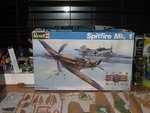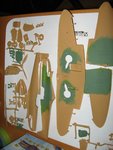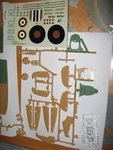prem895
Staff Sergeant
I decided that I would give this a go.This is only my second build so I thought this one might look good if I take my time and do it right. I bought this kit for $5, As you can see it was started but really nothing that can not be corrected. If I can make look like a $10 model then I will have suceeded.BTW is it cheating if I ask Wurger for advice?






